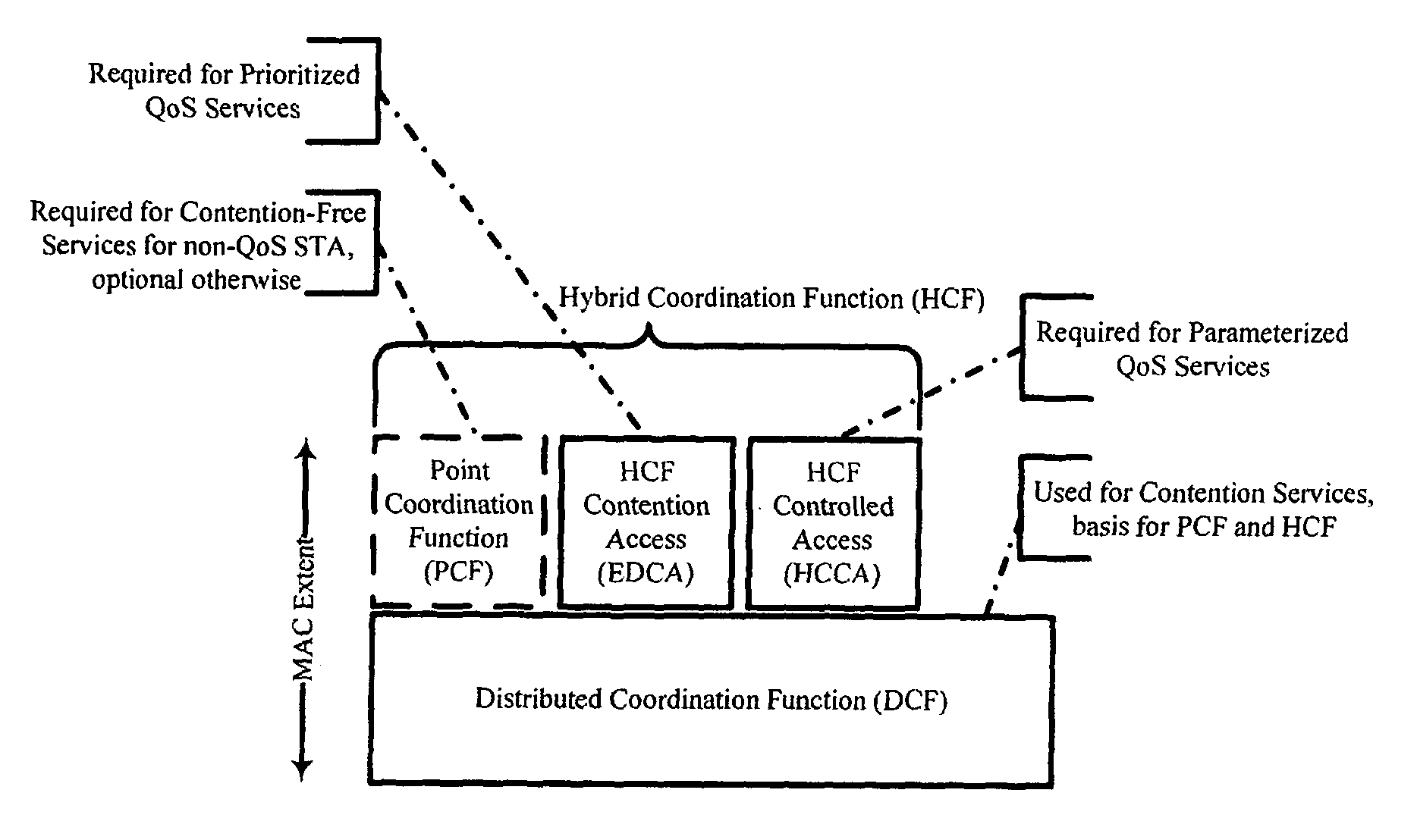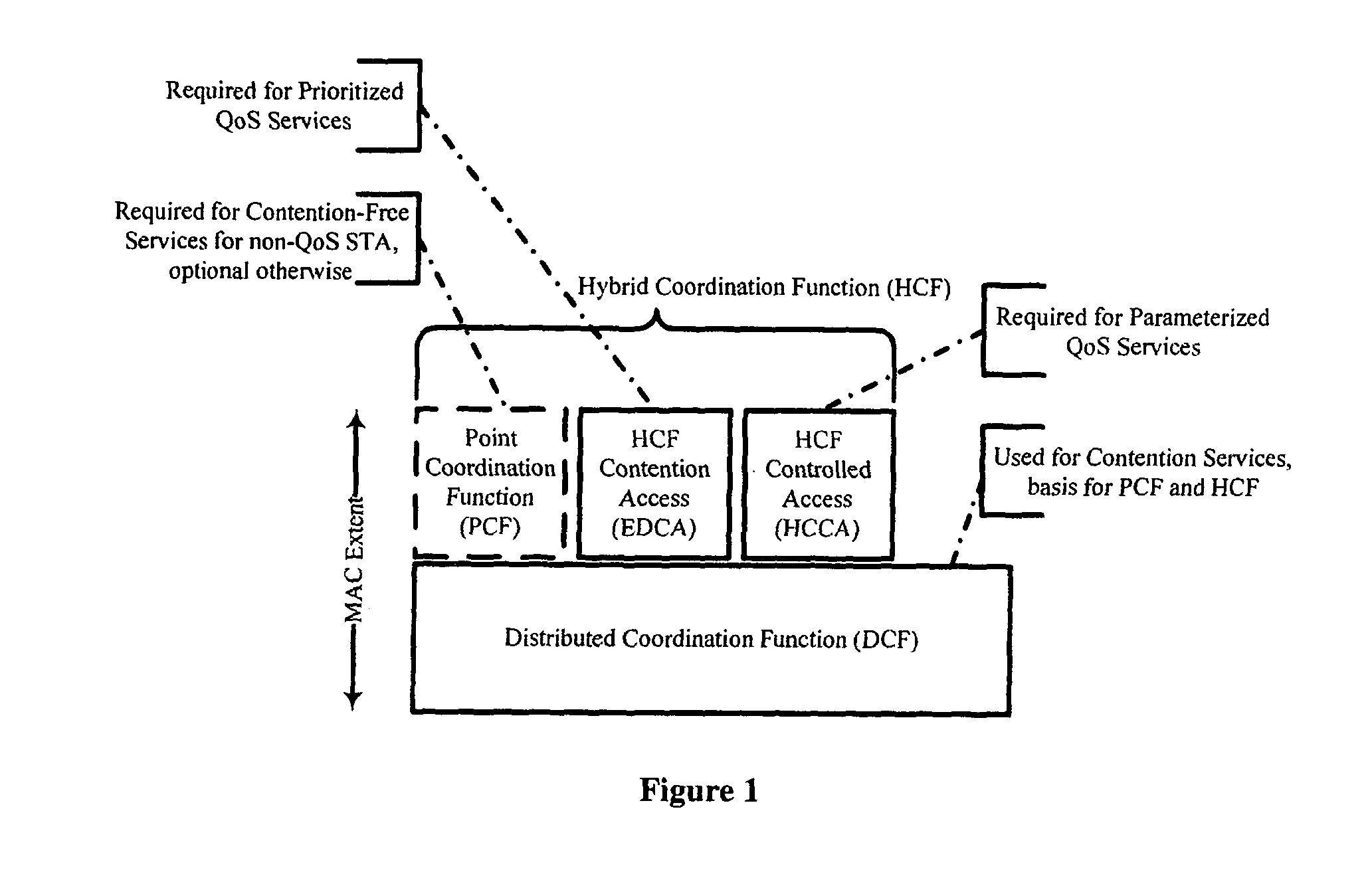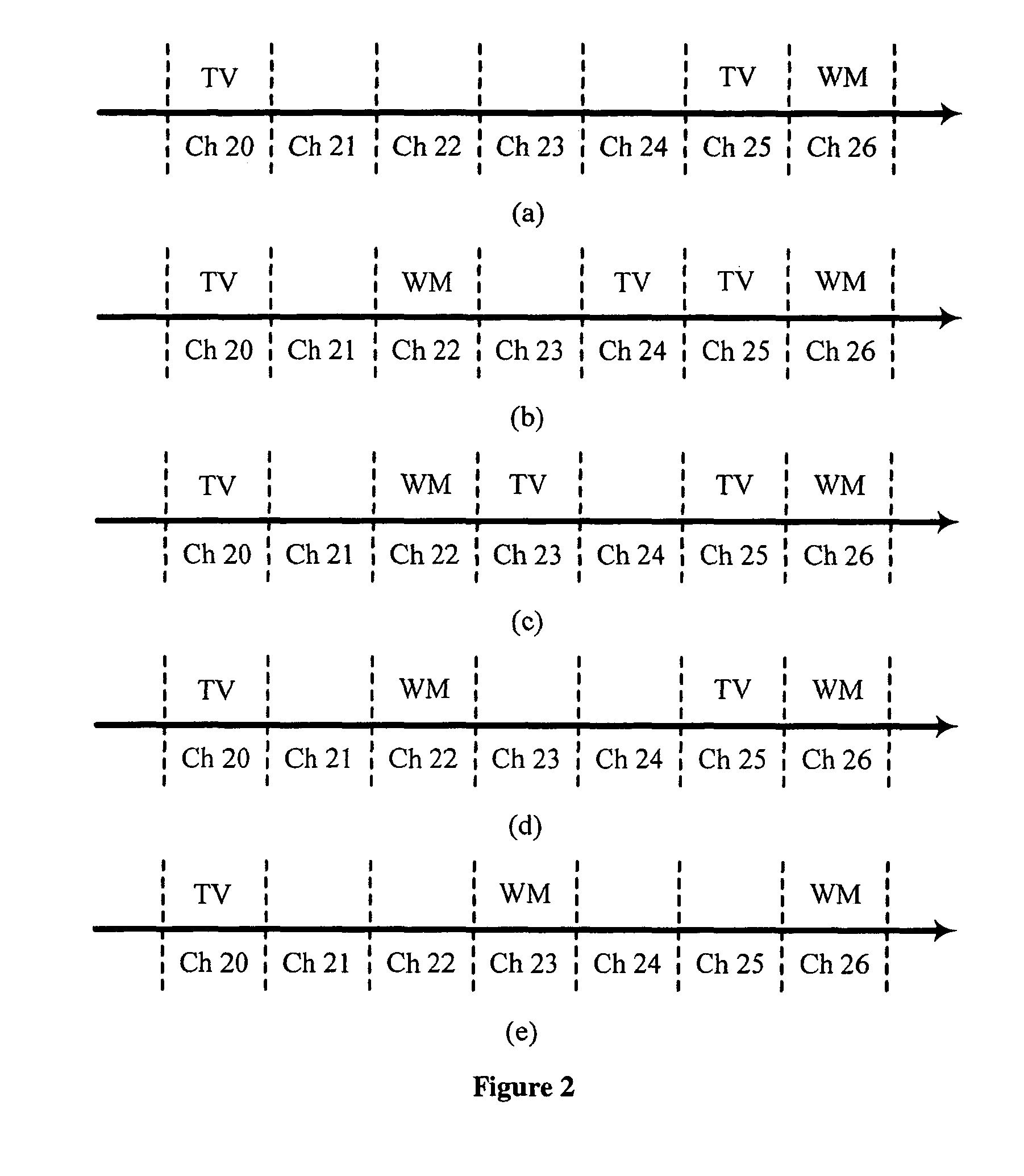Methods and apparatus for media access control in TV white space
a technology of media access control and white space, applied in the field of methods and apparatus for media access control in tv white space, can solve problems such as mutated hidden nodes and hidden nodes aris
- Summary
- Abstract
- Description
- Claims
- Application Information
AI Technical Summary
Benefits of technology
Problems solved by technology
Method used
Image
Examples
Embodiment Construction
[0031]Recently, based on the approval of FCC, unlicensed radio transmitters can utilize the broadcast television spectrum at locations where that spectrum is not being used by licensed services, according to IEEE Standard for Information Technology-Telecommunications and Information Exchange Between Systems-Local and Metropolitan Area Networks-Specific Requirements—Part 11: Wireless LAN Medium Access Control (MAC) and Physical Layer (PHY) Specifications,” IEEE, New York, N.Y., Jun. 2007. This unused TV spectrum is often termed “TV white space”. Several IEEE standard groups have been thinking how to use this non-licensed spectrum. Among these groups, IEEE 802.11 of group is significant because there are already tremendous 802.11 devices in the market. The 802.11 of group is standardizing use of TV white spaces for services traditionally provided by the 802.11 WLAN standard. Under the principles described herein, we describe operation of devices in different networks so that 802.11 of...
PUM
 Login to View More
Login to View More Abstract
Description
Claims
Application Information
 Login to View More
Login to View More - R&D
- Intellectual Property
- Life Sciences
- Materials
- Tech Scout
- Unparalleled Data Quality
- Higher Quality Content
- 60% Fewer Hallucinations
Browse by: Latest US Patents, China's latest patents, Technical Efficacy Thesaurus, Application Domain, Technology Topic, Popular Technical Reports.
© 2025 PatSnap. All rights reserved.Legal|Privacy policy|Modern Slavery Act Transparency Statement|Sitemap|About US| Contact US: help@patsnap.com



